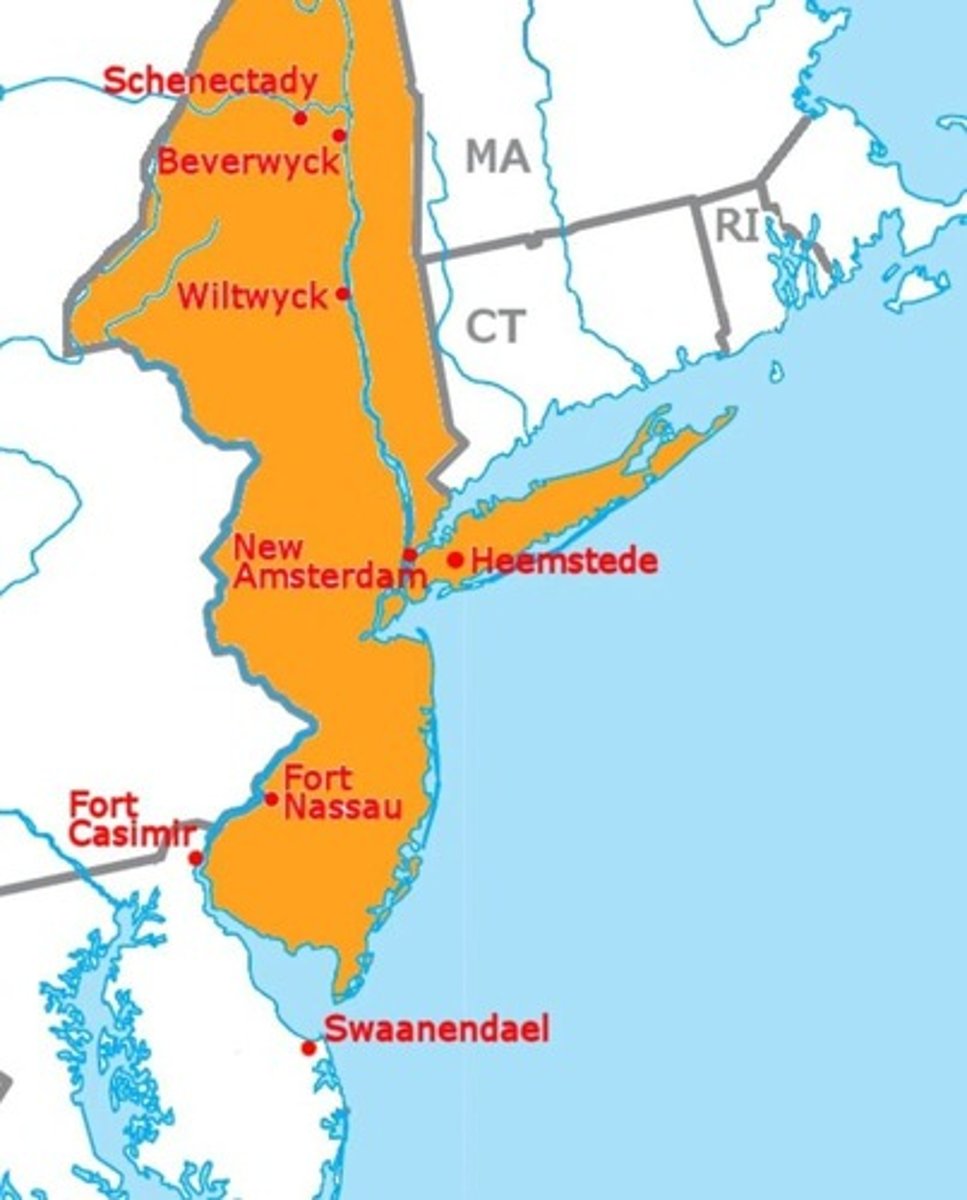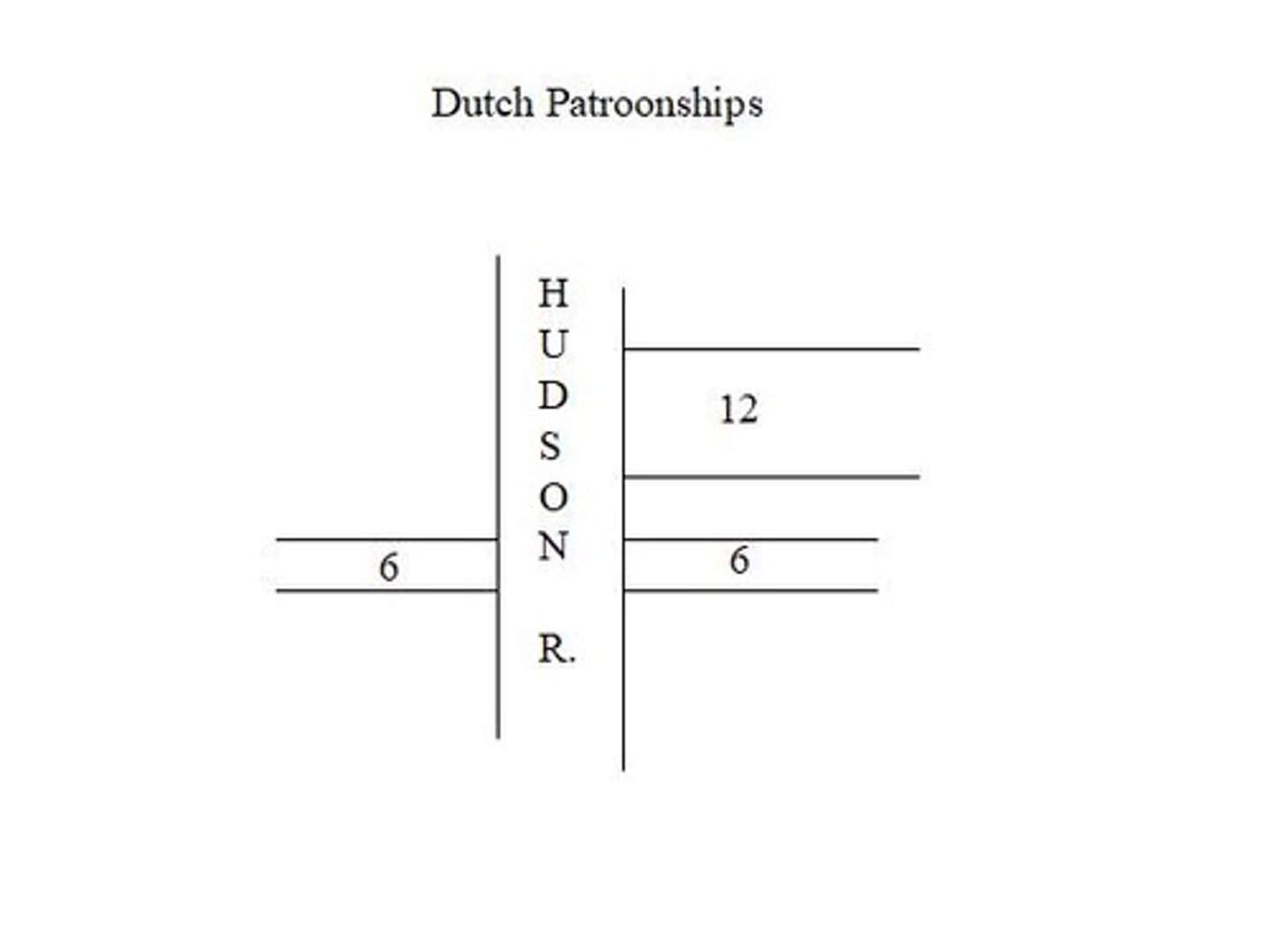Colonial America: New Netherlands, Pennsylvania, and 1750 Society
1/18
There's no tags or description
Looks like no tags are added yet.
Name | Mastery | Learn | Test | Matching | Spaced |
|---|
No study sessions yet.
19 Terms
What was New Netherlands?
A brief Dutch settlement along the Atlantic coast, claimed by Henry Hudson for the Dutch.

What was the significance of New Amsterdam?
New Amsterdam became a significant port and later transformed into New York City after the Dutch lost control.
Who were the Patroons?
Wealthy Dutch landowners who rented land to farmers in New Netherlands, limiting economic improvement.

Who was William Penn?
The founder of Pennsylvania, known for his Quaker beliefs and for establishing Philadelphia.
What are the core beliefs of the Quaker religion?
Quakers believed in the Inner Light, the goodness of man, and that violence was unacceptable.
What was the Walking Purchase?
A controversial land deal in Pennsylvania that involved swindling Native Americans out of their land.
How did Philadelphia become a commercial center?
It quickly became important for trade and agriculture, with farmlands around it vital for food production.
What was the social class structure in the colonies by 1750?
Top: wealthy landowners; Middle: few successful farmers and craftsmen; Bottom: many renters, indentured servants, and slaves.
What were the Navigation Acts?
Laws to ensure that special products could only be traded within the Empire and transported by British ships.
What was the population growth in the American colonies from 1700 to 1775?
Population grew from 250,000 in 1700 to 2,500,000 in 1775.
What ethnic groups were present in the colonial population?
English (Anglicans, Puritans, Quakers), Germans, Scots-Irish, Dutch, and Africans.

What was the role of Germans in Pennsylvania?
Germans settled the farmlands adjacent to Philadelphia, contributing to the colony's diversity.

What happened to relations with Native Americans after William Penn's death?
Relations deteriorated, leading to increased conflicts and land disputes.
What was the impact of the Scots-Irish on the frontier?
Aggressive Scots-Irish settlers often disregarded Native American rights.
How did the Quakers view clergy?
Quakers believed that individuals did not need clergy to access the Inner Light.
What was the significance of the term 'City of Brotherly Love'?
It refers to Philadelphia, designed by William Penn to be a welcoming city for all.
What characterized the economic landscape of early Pennsylvania?
It became a vital region for food production and a commercial center due to its fertile lands.
What was the demographic composition of Philadelphia?
Philadelphia had a majority of English Quakers, with significant German and Scots-Irish populations.
What was the primary purpose of the Navigation Acts?
To ensure that each part of the British Empire specialized in its best products and maintained trade within the Empire.